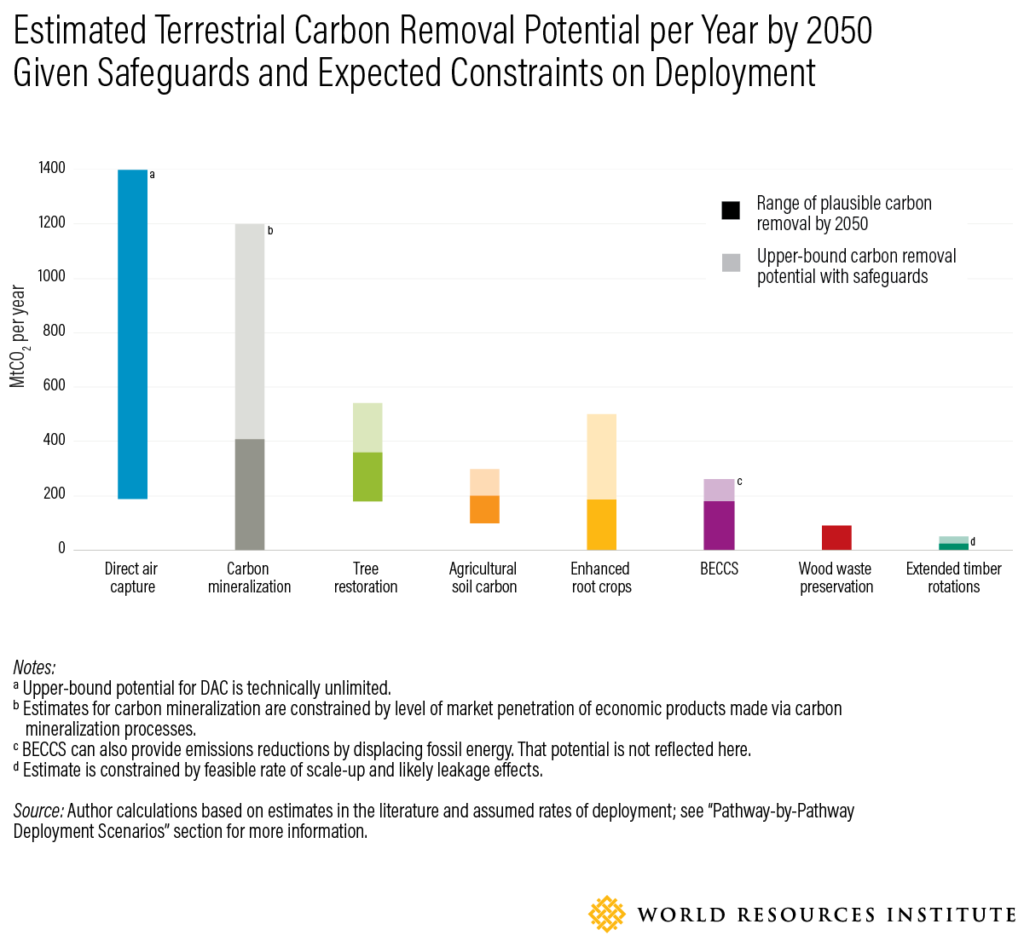Avoiding the worst impacts of climate change will require not only steep reductions in emissions, but also the removal of carbon dioxide from the atmosphere at a massive scale. WRI’s CarbonShot paper provides a set of high-priority federal policy options to advance land-based carbon removal capabilities and deployment in the U.S.
A Roadmap for Carbon Removal in the United States
World Resources InstituteAvoiding the worst impacts of climate change will require not only steep reductions in emissions, but also the removal of carbon dioxide from the atmosphere at a massive scale. WRI’s CarbonShot paper provides a set of high-priority federal policy options to advance land-based carbon removal capabilities and deployment in the U.S.
In 2020, the World Resources Institute released CarbonShot: Federal Policy Options for Carbon Removal in the United States, which explores a wide range of carbon removal strategies that can be deployed at a scale large enough to help the U.S. achieve carbon neutrality by 2050. Natural Climate Solutions play an integral role in developing a robust and cost-effective carbon removal portfolio. Tree restoration programs; improved management of agricultural soils through practices like cover cropping, diverse crop rotations and grazing optimization; and extended timber rotations can all contribute to an “all-of-the-above” portfolio of carbon removal solutions that also includes technological pathways like direct carbon capture and carbon mineralization. By investing up to $6 billion dollars a year across these solutions over the next 10 years, alongside rapid and steep cuts to greenhouse gas emissions, the U.S. can take a meaningful first step toward achieving carbon neutrality.

Access the executive summary, full report and 2-pagers here.
Learn more about carbon removal at wri.org/carbonremoval.
